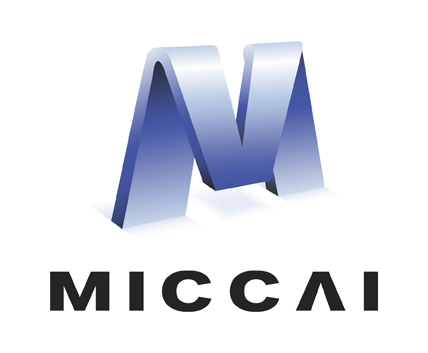Abstract
Accurate assessment of brain tumor progression from magnetic resonance imaging is a critical issue in clinical practice which allows us to precisely monitor the patient’s response to a given treatment. Manual analysis of such imagery is, however, prone to human errors and lacks reproducibility. Therefore, designing automated end-to-end quantitative tumor’s response assessment is of pivotal clinical importance nowadays. In this work, we further investigate this issue and verify the robustness of bidimensional and volumetric tumor’s measurements calculated over the delineations obtained using the state-of-the-art tumor segmentation deep learning model which was ranked 6\(^\textrm{th}\) in the BraTS21 Challenge. Our experimental study, performed over the Brain Tumor Progression dataset, showed that volumetric measurements are more robust against varying-quality tumor segmentation, and that improving brain extraction can notably impact the calculation of the tumor’s characteristics.
This work was supported by the National Centre for Research and Development (POIR.01.01.01-00-0092/20). JN was supported by the Silesian University of Technology funds through the grant for maintaining and developing research potential. This paper is in memory of Dr. Grzegorz Nalepa, an extraordinary scientist, pediatric hematologist/oncologist, and a compassionate champion for kids at Riley Hospital for Children, Indianapolis, USA, who helped countless patients and their families through some of the most challenging moments of their lives.
Access this chapter
Tax calculation will be finalised at checkout
Purchases are for personal use only
References
Abbas, H.K., Fatah, N.A., Mohamad, H.J., Alzuky, A.A.: Brain tumor classification using texture feature extraction. J. Phys. Conf. Ser. 1892(1), 012012 (2021)
Baid, U., et al.: The RSNA-ASNR-MICCAI BraTS 2021 Benchmark on Brain Tumor Segmentation and Radiogenomic Classification (2021). https://doi.org/10.48550/arXiv.2107.02314. http://arxiv.org/abs/2107.02314, number: arXiv:2107.02314
Bakas, S., et al.: Advancing the cancer genome atlas glioma MRI collections with expert segmentation labels and radiomic features. Sci. Data 4(1), 170117 (2017). https://doi.org/10.1038/sdata.2017.117. https://www.nature.com/articles/sdata2017117
Bakas, S., et al.: Advancing the cancer genome atlas glioma MRI collections with expert segmentation labels and radiomic features. Nat. Sci. Data 4, 1–13 (2017). https://doi.org/10.1038/sdata.2017.117
Berntsen, E.M., et al.: Volumetric segmentation of glioblastoma progression compared to bidimensional products and clinical radiological reports. Acta Neurochir. 162(2), 379–387 (2020)
Chang, K., et al.: Automatic assessment of glioma burden: a deep learning algorithm for fully automated volumetric and bidimensional measurement. Neuro Oncol. 21(11), 1412–1422 (2019)
Clark, K., et al.: The cancer imaging archive (TCIA): maintaining and operating a public information repository. J. Digit. Imaging 26(6), 1045–1057 (2013)
Davatzikos, C., et al.: Cancer imaging phenomics toolkit: quantitative imaging analytics for precision diagnostics and predictive modeling of clinical outcome. J. Med. Imaging 5(1), 011018 (2018)
Ellingson, B.M., Wen, P.Y., Cloughesy, T.F.: Modified criteria for radiographic response assessment in glioblastoma clinical trials. Neurotherapeutics 14(2), 307–320 (2017)
Gahrmann, R., et al.: Comparison of 2D (RANO) and volumetric methods for assessment of recurrent glioblastoma treated with bevacizumab-a report from the BELOB trial. Neuro Oncol. 19(6), 853–861 (2017)
Isensee, F., Jaeger, P.F., Kohl, S.A.A., Petersen, J., Maier-Hein, K.H.: nnU-Net: a self-configuring method for deep learning-based biomedical image segmentation. Nat. Methods 18(2), 203–211 (2021)
Isensee, F., et al.: Automated brain extraction of multisequence MRI using artificial neural networks. Hum. Brain Mapp. 40(17), 4952–4964 (2019)
Kamnitsas, K., et al.: Efficient multi-scale 3D CNN with fully connected CRF for accurate brain lesion segmentation. Med. Image Anal. 36, 61–78 (2017)
Kickingereder, P., et al.: Automated quantitative tumour response assessment of MRI in neuro-oncology with artificial neural networks: a multicentre, retrospective study. Lancet Oncol. 20(5), 728–740 (2019)
Kotowski, K., Adamski, S., Machura, B., Zarudzki, L., Nalepa, J.: Coupling nnU-nets with expert knowledge for accurate brain tumor segmentation from MRI. In: Crimi, A., Bakas, S. (eds.) Brainlesion: Glioma, Multiple Sclerosis, Stroke and Traumatic Brain Injuries. LNCS, vol. 12963, pp. 197–209. Springer, Cham (2022). https://doi.org/10.1007/978-3-031-09002-8_18
Menze, B.H., et al.: The multimodal brain tumor image segmentation benchmark (BRATS). IEEE Trans. Med. Imaging 34(10), 1993–2024 (2015)
Nalepa, J., et al.: Fully-automated deep learning-powered system for DCE-MRI analysis of brain tumors. Artif. Intell. Med. 102, 101769 (2020)
Naser, M.A., Deen, M.J.: Brain tumor segmentation and grading of lower-grade glioma using deep learning in MRI images. Comput. Biol. Med. 121, 103758 (2020)
Pati, S., et al.: The cancer imaging phenomics toolkit (CaPTk): technical overview. In: Crimi, A., Bakas, S. (eds.) BrainLes 2019. LNCS, vol. 11993, pp. 380–394. Springer, Cham (2020). https://doi.org/10.1007/978-3-030-46643-5_38
Poernama, A.I., Soesanti, I., Wahyunggoro, O.: Feature extraction and feature selection methods in classification of brain MRI images: a review. In: Proceedings of IEEE IBITeC, vol. 1, pp. 58–63 (2019)
Rucco, M., Viticchi, G., Falsetti, L.: Towards personalized diagnosis of glioblastoma in fluid-attenuated inversion recovery (FLAIR) by topological interpretable machine learning. Mathematics 8(5), 770 (2020)
Saleem, H., Shahid, A.R., Raza, B.: Visual interpretability in 3D brain tumor segmentation network. Comput. Biol. Med. 133, 104410 (2021)
Schmainda, K., Prah, M.: Data from Brain-Tumor-Progression (2019). https://doi.org/10.7937/K9/TCIA.2018.15QUZVNB. https://wiki.cancerimagingarchive.net/x/1wEGAg. Version Number: 1 Type: dataset
Thakur, S., et al.: Brain extraction on MRI scans in presence of diffuse glioma: multi-institutional performance evaluation of deep learning methods and robust modality-agnostic training. Neuroimage 220, 117081 (2020)
Wen, P.Y., et al.: Updated response assessment criteria for high-grade gliomas: response assessment in neuro-oncology working group. J. Clin. Oncol. 28(11), 1963–1972 (2010)
Zegers, C., et al.: Current applications of deep-learning in neuro-oncological MRI. Physica Med. 83, 161–173 (2021)
Author information
Authors and Affiliations
Corresponding author
Editor information
Editors and Affiliations
Rights and permissions
Copyright information
© 2023 The Author(s), under exclusive license to Springer Nature Switzerland AG
About this paper
Cite this paper
Kotowski, K., Machura, B., Nalepa, J. (2023). Robustifying Automatic Assessment of Brain Tumor Progression from MRI. In: Bakas, S., et al. Brainlesion: Glioma, Multiple Sclerosis, Stroke and Traumatic Brain Injuries. BrainLes 2022. Lecture Notes in Computer Science, vol 13769. Springer, Cham. https://doi.org/10.1007/978-3-031-33842-7_8
Download citation
DOI: https://doi.org/10.1007/978-3-031-33842-7_8
Published:
Publisher Name: Springer, Cham
Print ISBN: 978-3-031-33841-0
Online ISBN: 978-3-031-33842-7
eBook Packages: Computer ScienceComputer Science (R0)


